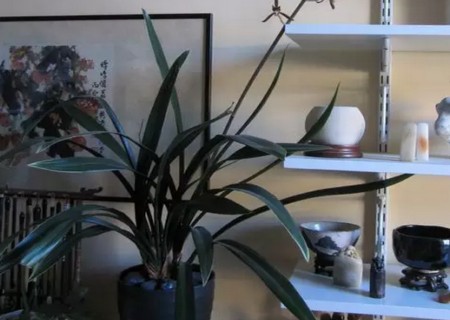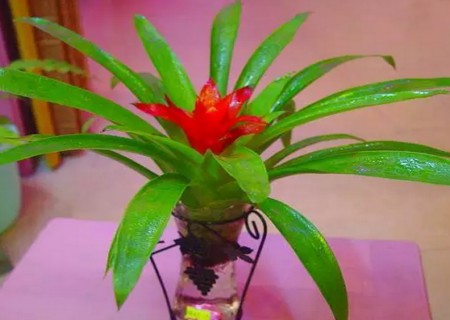Culture methods and matters needing attention of potted Cymbidium
As one of the most famous national orchids in our country, we should certainly take a look at the beautiful orchid. In fact, it has many laudatory names, such as orchid, orchid, and so on, which symbolize beauty and blessing. Its leaves are belt-shaped, very thin dark green, and have a little leathery, so they are called Mulan. Chinese magnolia has elegant leaf shape, refined flower posture and delicate fragrance, and enjoys the reputation of "fragrance of kings" and "gentleman in flowers". It can be said that it has charming charm, and it is inevitable that you want to try planting.
Cymbidium is also called orchid mud, which is suitable to be planted in the soil with rich humus content, loose and non-adhesive soil, which is more conducive to the growth of Cymbidium. Then transplanted in indoor potted plants, as an indoor ornamental plant, the culture method of Magnolia will become the concern of many consumers. The breeding methods and matters needing attention of Cymbidium should be understood.

1. Environment
The ink likes the air circulation environment, carries on the ventilation when the relative humidity is too low, had better spray water at the same time, this helps to increase the air humidity and prevent the leaves from being at the tip. Because of its long and thin leaves, many stomata and large contact surface with air, it especially needs a fresh air and pollution-free growth environment.
2. Soil
Potted orchids often use humus soil under the forest of their origin, which is called "orchid mud" by locals. This kind of soil is rich in humus, loose and non-adhesive, and is often slightly acidic, so it is an excellent potted soil for orchid cultivation. Mo Lan likes the soil environment of slight tide, it is not suitable to make it suffer from drought, and the water used had better be soft water.
3. Lighting
To shade the magnolia in summer, we should ensure that the plant receives proper direct sunlight, otherwise the plant growth is poor and the development is poor, but it is necessary to ensure that the plant is exposed to sunlight before 10:00 every morning to avoid direct sunlight in the noon and afternoon. otherwise, it is not conducive to the normal growth and development of the plant. Excessive light can easily cause sunburn of leaves. Excessive shading or long-term indoor exposure will affect the photosynthesis of orchids, resulting in poor growth and not easy to blossom. In short, under the premise of ensuring that the orchid leaves will not be burned, there should be more sunlight, especially the morning light before 9 am is very beneficial to the growth and flowering of orchids.
4. Temperature
Cymbidium prefers warm environment and grows well in the temperature range of 16 ℃ ~ 28 ℃. The suitable temperature for the growth of Cymbidium is 18 ℃ ~ 28 ℃. If the temperature is more than 30 ℃ in summer and the average temperature in winter is lower than 10 ℃, it will grow slowly or enter the dormancy period. When the temperature is higher than 35 ℃, the leaves of the orchid plant will be scorched or curled; below 5 ℃, the leaves may suffer frost injury, the light leaves will appear crimson patches, the heavy ones will freeze to death or even the whole plant will die.
5. Humidity
The most suitable temperature for the growth of Cymbidium is between 20 and 28 degrees. If it is below 20 degrees, then the growth rate of Cymbidium becomes slower, and if it is higher than 25 degrees, the growth rate of Cymbidium is too fast. When it reaches 30 degrees, Melan will go into dormancy. Mo Lan likes the growing environment where the soil is slightly dry and the air humidity is high. Therefore, planting magnolia should artificially create 55% Mui 75% during the day and not less than 80% relative humidity at night. Humidifier, automatic spray, hanging water curtain, ground sprinkling, and other measures can be adopted, such as setting up pools or basins to humidify.
6. Watering
As the saying goes, "raise orchids a little, watering for three years." Rain Water or snow water is the best water for ink orchid. If it is necessary to water the ink orchid with tap water, it should be exposed to the sun for a day before it can be used. When watering the orchid, you should not water too much or too little. There can be no stagnant water in the basin, which will cause the roots of the orchid to rot. When watering, you should be careful not to pour water into the center of the leaf, which will cause the center of the leaf to rot. It is watered once a day in midsummer. In winter, 4mi is once every 5 days.
7. Fertilization
Cymbidium has little demand for fertilizer, and the plants can grow well without base fertilizer. The plants are irrigated with dilute liquid fertilizer once a year in spring and autumn, and topdressing should be stopped during the dormant period. Mo Lan fertilization "should be light and avoid thick", generally start at the end of spring and stop at the end of autumn. It is appropriate to apply fertilizer at a temperature of 18-25 degrees Celsius, but not in cloudy and rainy days. Types of fertilizers, organic or inorganic fertilizers are available.
8. Pest control
Plants are susceptible to sunburn disease when they receive too much sunshine in summer. The symptom is that yellow spots appear on the surface of the leaves, then turn black gradually, and in severe cases, the whole leaf dries up and dies. The prevention and control method is: avoid direct sunlight for too long, should achieve timely shading. In balcony cultivation, Magnolia is prone to root rot and is often attacked by shell insects, ants and other harmful animals.
9. Location
Ink orchid can be placed in the east, south, west balcony for management, in which the east, west balcony cultivation effect is better, in the south balcony should avoid the sun is too strong. Because it is moderate in height, it can be placed on all kinds of balconies of different sizes. During its vigorous growth stage, the plant should be placed where it is exposed to scattered sunlight for not less than 1-2 hours a day. The environment should be kept ventilated in summer. It doesn't matter if the temperature is a little lower in winter.
Note:
1. Maintain high air humidity. During the growth period, we should often spray water on the branches and leaves of the plant and the surrounding environment, especially in high temperature weather and low air humidity. However, when the air humidity is too high in the rainy season, water spraying should be strictly prohibited to prevent the occurrence of various diseases.
2. Keep a shady environment. There can be a short period of sunlight in the early morning and dusk to promote the rapid and healthy growth of the new orchid. In addition, the shady environment should be maintained.
3. Watering correctly. When watering, we should grasp the principle of keeping the basin soil moist but not too wet, that is, when the topsoil is still slightly wet, the topsoil should be watered thoroughly and not half of the water; in rainy weather, the orchid pot should be moved to shelter, and the stagnant water should be poured out in time; when the orchid is budding in winter, it should also be properly watered, and too dry is harmful to its growth and flowering.
4. Master the principle of fertilization. The fertilization principle of "be diligent and light, and avoid sudden and thick" should be followed. Do not apply thick fertilizer, otherwise it will hurt the root and affect the growth of the plant.
Time: 2019-05-31 Click:
- Prev

How to raise the good luck of potted plants
Good luck is a very beautiful indoor potted flower that can watch both flowers and leaves. With its unique rosette-like plant type, bright spikes and long flowering period, it has gradually become the darling of the flower market. Especially its red design and color, it gives people the feeling that it is active, which is especially suitable for people who like to be energetic.
- Next

The method of Family Culture of Melilan
As an ornamental plant, ink orchid not only has a large number of lovers, but also has always been the theme of poetry, painting and handicrafts. Since ancient times, orchids, orchids, orchids and orchids have come and gone in a hurry, leaving behind a large number of precious varieties and ink treasures. Throughout ancient and modern times, at home and abroad
Related
- Fuxing push coffee new agricultural production and marketing class: lack of small-scale processing plants
- Jujube rice field leisure farm deep ploughing Yilan for five years to create a space for organic food and play
- Nongyu Farm-A trial of organic papaya for brave women with advanced technology
- Four points for attention in the prevention and control of diseases and insect pests of edible fungi
- How to add nutrient solution to Edible Fungi
- Is there any good way to control edible fungus mites?
- Open Inoculation Technology of Edible Fungi
- Is there any clever way to use fertilizer for edible fungus in winter?
- What agents are used to kill the pathogens of edible fungi in the mushroom shed?
- Rapid drying of Edible Fungi

